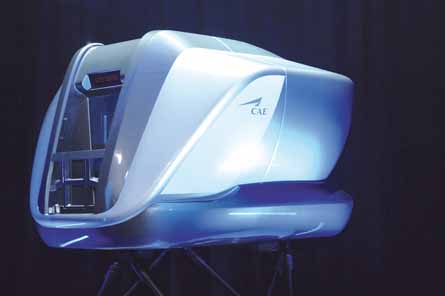Canadian flight simulator manufacturer CAE has launched a new product aimed at the narrowbody airliner market and focused on recurrent and third-party training. The 5000-series full-flight simulator is a standardised device for the Airbus A320 and Boeing 737, as well as business jets, with smaller and simpler visual, motion and interface systems to reduce footprint and life-cycle costs.
Training schools exemplify the market, says Marc Parent, group president, simulation products, because they want a standard simulator that is not "tail-specific". The company has also announced the 7000 - a "refresh" of its customised, tail-specific Level D simulator aimed at the widebody market.
|
|---|
The 5000-series is a standardised device for the A320 and 737 |
The new simulator comes in two models with list prices of C$8-11 million ($7-9.5 million): the 5200 aimed at recurrent training and upgradable to the more expensive 5400 Level D device suitable for initial training. Cost-reducing features include electric motion and PC-based visual system with liquid-crystal-on-silicon projectors. "The device has a smaller footprint - where a training centre can fit six traditional simulators it can get nine 5000s," say Parent.
Although the simulator does not use aircraft parts, it uses the same software models as CAE's Level D simulators. With narrowbodies forecast to account for 60% of deliveries over the next 20 years, target customers include repeat buyers of simulators for high-volume aircraft and smaller airlines moving to in-house training.
Launch customers are CAE's own global training network Lufthansa Flight Training, which has ordered an A320 machine and Ryanair, for five 737 simulators.
Source: Flight International




















